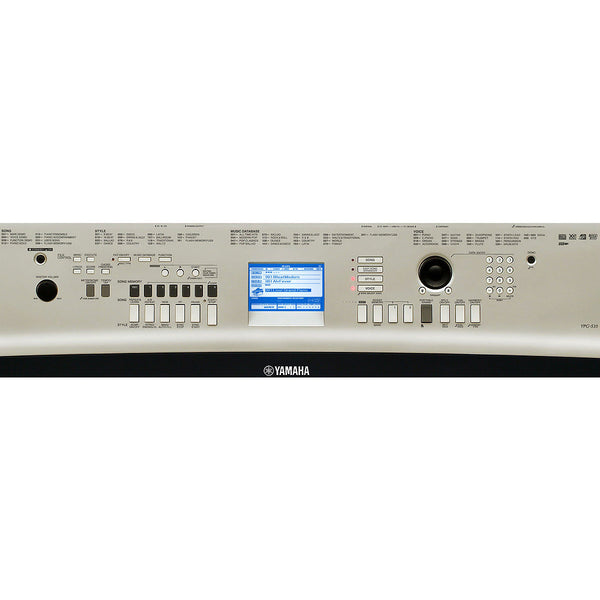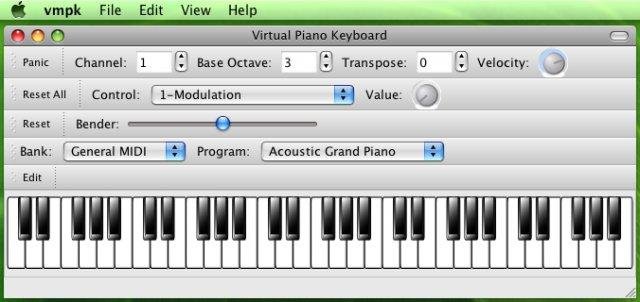

- #Virtual midi piano keyboard point blank manuals
- #Virtual midi piano keyboard point blank mod
- #Virtual midi piano keyboard point blank plus

#Virtual midi piano keyboard point blank manuals
Once again, be sure to read the well-written manuals thoroughly!Īgain like the Montage, there are three main levels for sounds Performance, Part and Element.

Talking of which, this almost boundless possibility and programming depth still brings inevitable head-scratching at times and it sometimes feel overwhelming, even for well-seasoned programming nerds! We also wish the controller assignment system was faster and more intuitive and even though the Montage’s quick control assign feature (added in OS v2.0) is included, it’s odd that you can’t simply press the control assign button (at any time), turn any controller, then choose a parameter - this is how it should work! Also, note that controller assignments are made on a common/overall level and at part level where the real-time controls are available for each of the 16 parts and more besides it’s essentially a super- complex digital modular and thus, you will need to spend time learning the OS and setting up patches and controller assignments before gigs. It can also be controlled via foot pedal for hands-off control over many parameters simultaneously you could morph from one sound into another, fade in an FM-X layer over an AWM2 layer, control several layers’ volumes or filters or effect levels/parameters, and just like the Montage, the MODX’s control/sound-design possibilities are incredibly deep - it really does feel quite uncannily like the Montage! The knob itself glows different user-definable colours, flashing with the overall tempo (optional). The Montage’s ‘superknob’ is also included here and serves as a central ‘macro’ knob which can be assigned to control a staggering array of simultaneous parameters manually, or via the ‘motion control’ function, which allows automation of the knob via motion sequences (or over MIDI). Finally, you can store eight scenes (panel setting snapshots) to capture and evolve your performances in real time. The routing is very exible and the quality superb throughout.
#Virtual midi piano keyboard point blank plus
Then there’s a wealth of versatile effects onboard including variation effects, two inserts blocks, plus master and A/D effects including phasers and modulation effects, reverbs, delays, amp modelling, an external audio sidechain feature, powerful filters and more off-the-wall effects too. There are also several motion lanes (tracks) that can be sent to myriad destinations to transform a simple sound into something otherworldly! It’s a complex system (and you’ll need the manual) but once you work it out it, it really brings sounds to life.
#Virtual midi piano keyboard point blank mod
Also, the Motion Sequencer creates multiple, simultaneous stepped or smooth transition-based mod sequences that you can use to evolve sounds over time. It can be used as a backing tool or to spice up sounds, adding articulation on acoustic guitar patches, producing accent arps with variation available via the realtime knobs, or for creating beats, phrases and riffs. Like the Montage, the MODX range features a powerful arpeggiator with 10,000+ presets. It’s actually brilliant that Yamaha have managed to retained so much for the price though.

Regardless, the screen feels largely responsive and the OS feels almost identical to the much more expensive Montage, showing just how much power has been packed in.įurthermore (compared to the Montage), the ash ROM is slightly smaller for samples (and sample rate is down from 192kHz to max 44.1kHz), FM-X polyphony has been halved (from 128 to 64 notes), the Pure Analogue Circuit (post DAC circuitry) has gone (and we’d say a little clarity/air and richness has been lost as a result), the outputs are unbalanced versus balanced and there’s no ribbon controller. Also, as the MODX has lost many of the Montage’s direct parameter access buttons, there is a greater reliance on the screen for deeper programming. Like the Montage, the heart of the MODX programming system is the same full-colour, 7” touch-screen and data wheel/cursors, though you still can’t use the real-time controls during the editing process which would speed things up considerably. The soft feel pitch/mod wheels from the Montage have also made way for the harder plastic type found on the MOX and older Yamaha boards for compactness, they are now placed above the keyboard, instead of to the side. Talking of lost controls, the MODX has lost the Montage’s eight rubberised knobs with LED ring dials and now has four multi-function knobs, two assignable buttons and four plastic-capped multi-function faders instead of eight (this time with no LED meters) which can be assigned to various duties including (among others) part/element volume levels, organ drawbars and scenes (which are snapshots of performance control data for quickly changing up your sounds).


 0 kommentar(er)
0 kommentar(er)
